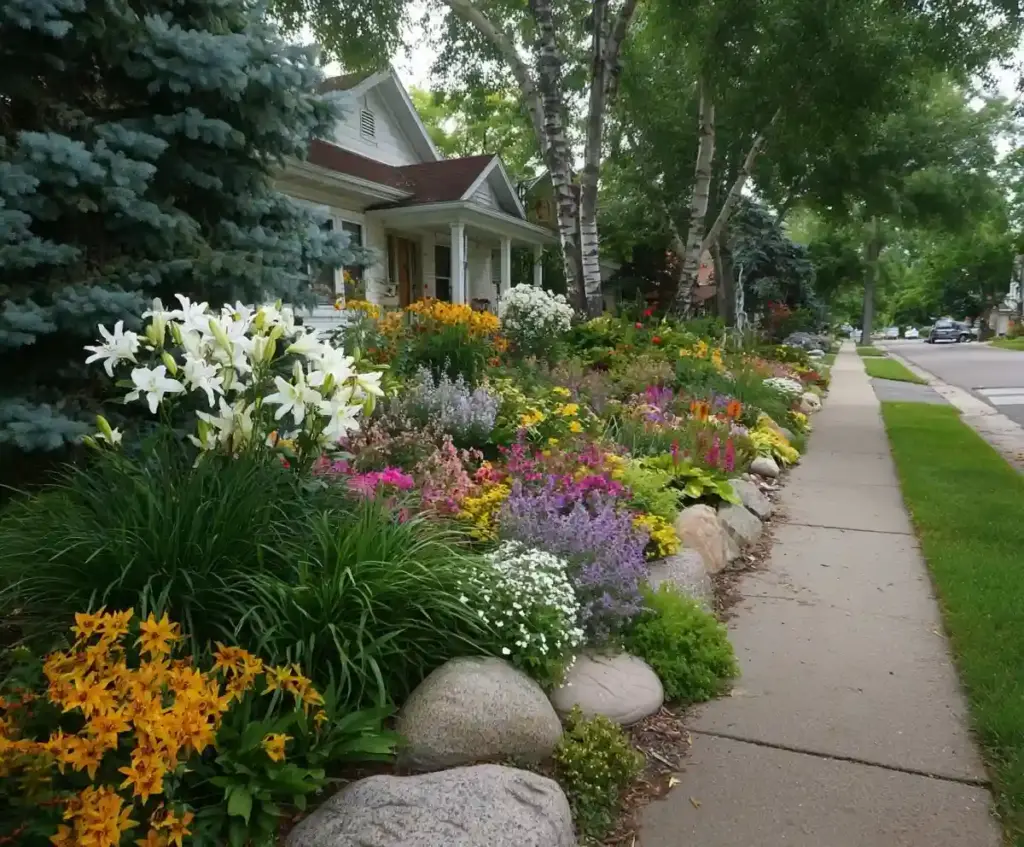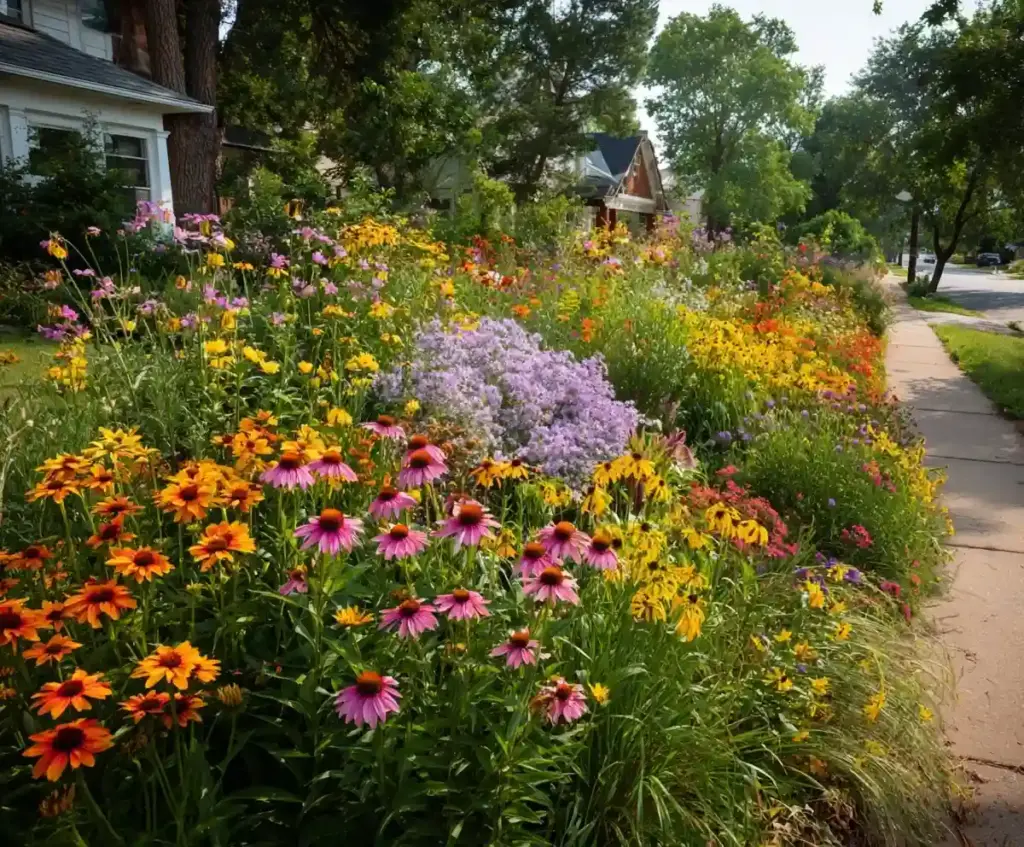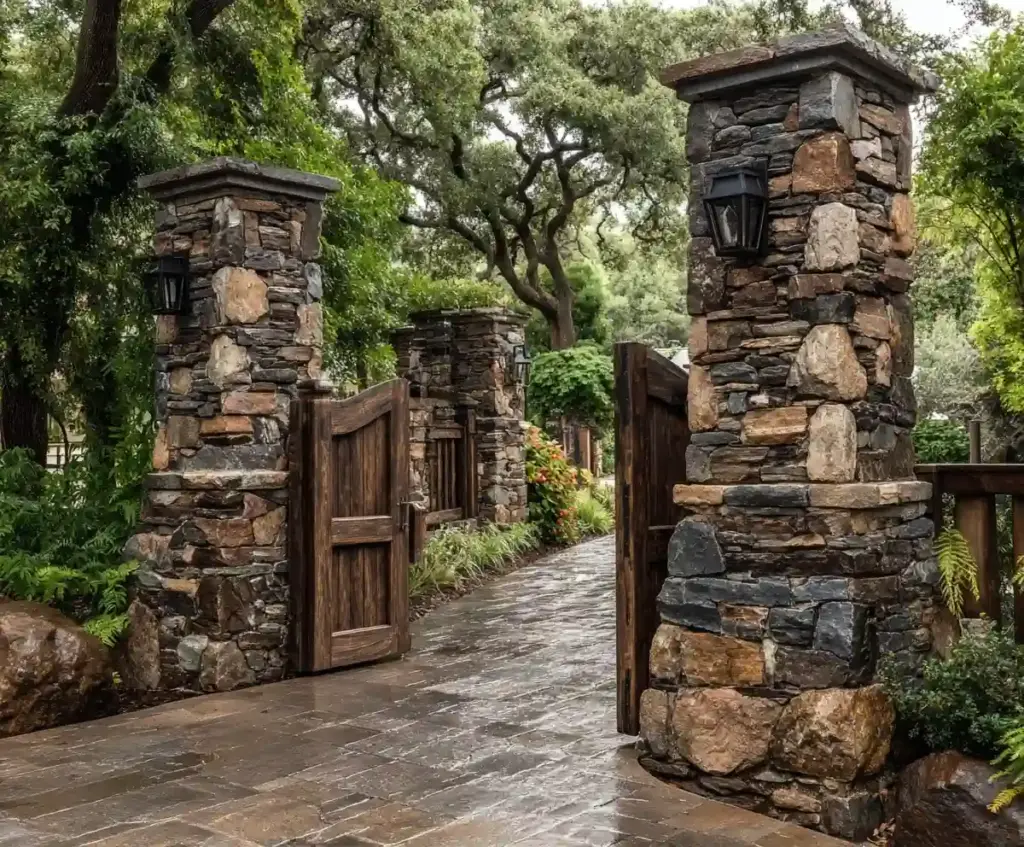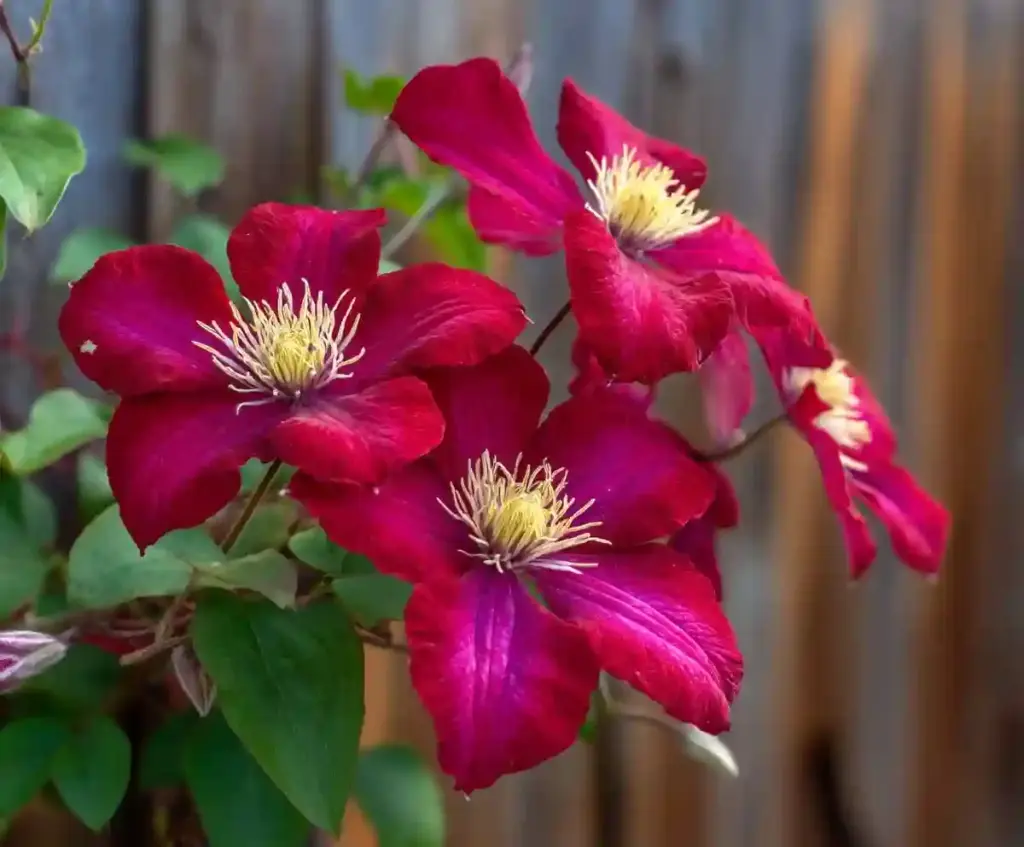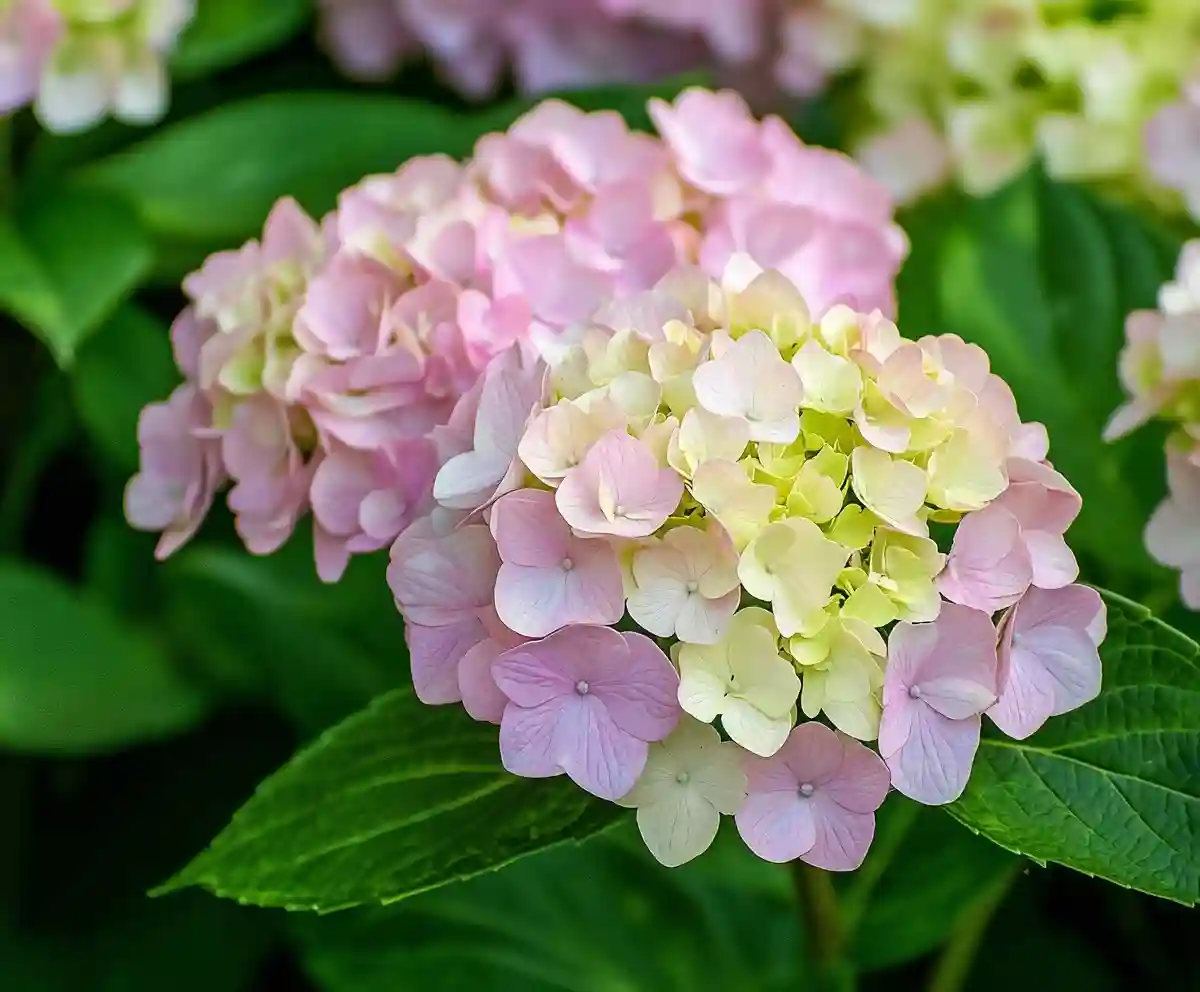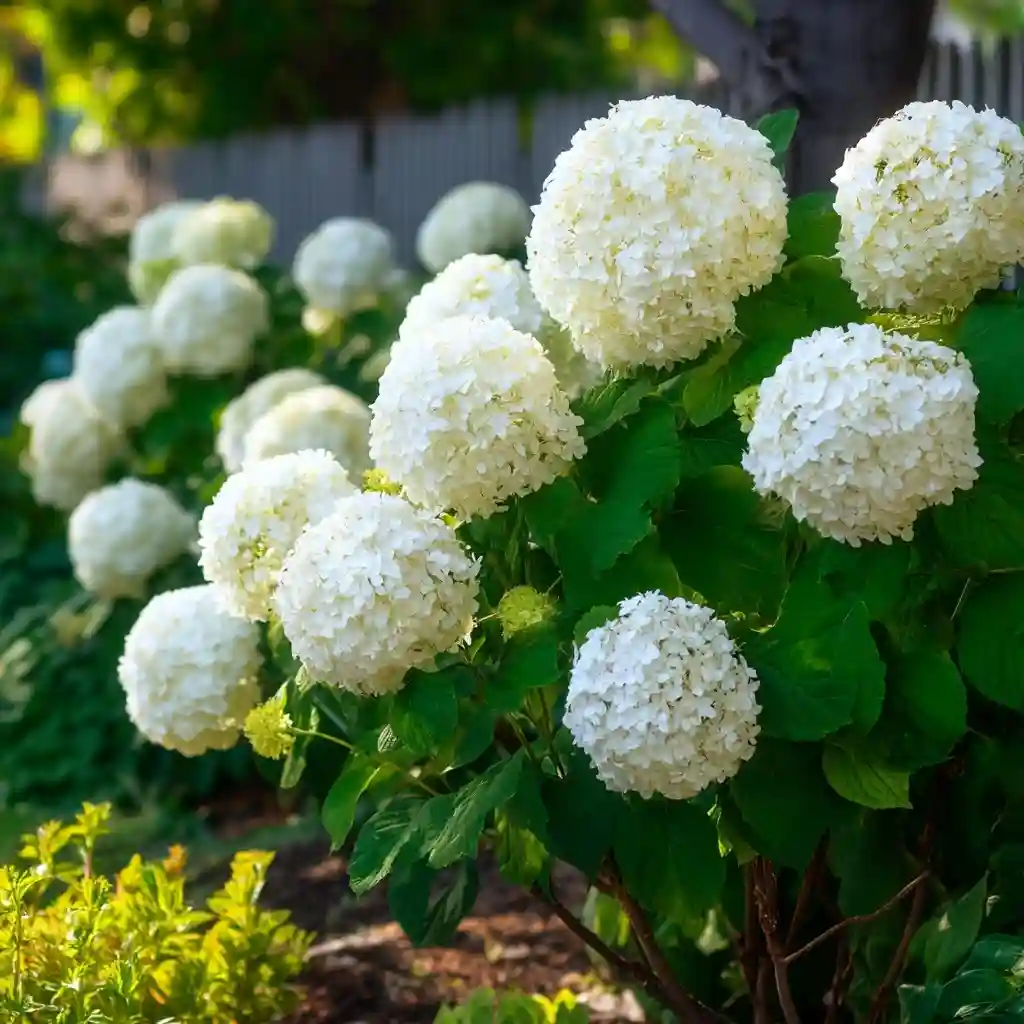White hydrangea varieties are beloved for their timeless elegance and ability to brighten shady garden corners with glowing, creamy blooms. These versatile shrubs come in many forms—fluffy spheres, cone-shaped panicles, lace-like clusters—and each offers something special for borders, containers, or hedges.
Whether you’re planning a monochrome garden, looking for low-maintenance beauty, or searching for long bloom times, there’s a white hydrangea for every setting and style. From compact varieties perfect for small yards to bold climbers that transform fences and walls, this list covers the most stunning and reliable options for garden enthusiasts.
Let’s explore the best white hydrangea varieties to consider growing this season.
Table of Contents
1. ‘Annabelle’ Smooth Hydrangea (Hydrangea arborescens ‘Annabelle’)
Few white hydrangea varieties are as iconic or dependable as ‘Annabelle’. A long-time favorite in North American gardens, this smooth hydrangea is celebrated for its massive, snowball-like blooms that start pale green in early summer and mature to a pure, milky white.
Each rounded flower head can reach up to 12 inches across, creating a dramatic display against the shrub’s soft green foliage. Despite its bold appearance, ‘Annabelle’ remains a manageable size, making it ideal for smaller gardens, borders, and foundation plantings.
This cultivar is also known for its long bloom time—lasting into early fall—and its resilience to common diseases. It’s an excellent choice for informal hedges or as a soft backdrop for perennials and ornamental grasses.
Why Grow ‘Annabelle’?
- Showy, rounded white blooms from early summer to fall
- Compact habit for small gardens or border planting
- Hardy and disease-resistant
- Awarded the Royal Horticultural Society’s Award of Garden Merit
Growing Tips
- Hardiness: USDA zones 3–8
- Height & Spread: 3–5 ft tall, 4–6 ft wide
- Light: Full sun to part shade
- Soil: Moist, well-draining, mildly acidic to neutral
- Best Use: Hedges, mixed borders, cottage gardens
2. ‘Onyx Zebra’ Hydrangea (Hydrangea macrophylla ‘Onyx Zebra’)
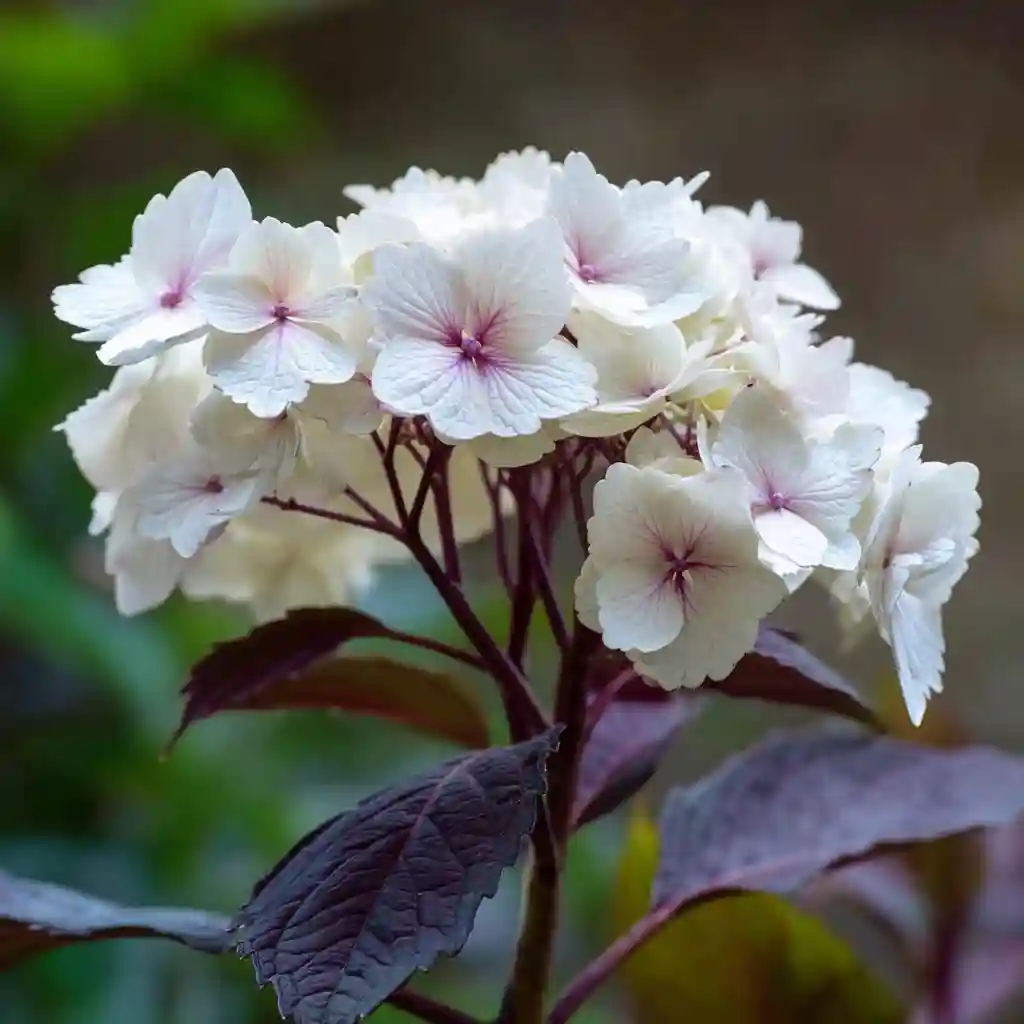
Among the most striking white hydrangea varieties, ‘Onyx Zebra’ makes an unforgettable statement. This compact cultivar features bright white blooms with frilled, saucer-shaped petals that resemble bridal lace—elegant and eye-catching.
What truly sets ‘Onyx Zebra’ apart is the dramatic contrast between its pristine blooms and its nearly black stems and deep green, purple-tinged foliage. This bold pairing creates visual depth and makes it a favorite for modern or monochrome garden designs.
Despite its luxurious appearance, ‘Onyx Zebra’ is quite manageable in size, making it ideal for containers, front yard displays, or small-space landscaping.
Why Choose ‘Onyx Zebra’?
- Unique dark stems and foliage contrast beautifully with white blooms
- Frilled, saucer-shaped flowers add texture and elegance
- Compact and great for container gardening
- Long blooming season from early summer to early fall
Growing Tips
- Hardiness: USDA zones 5–9
- Height & Spread: 4–5 ft tall, 1–2 ft wide
- Light: Full sun to part shade
- Soil: Humus-rich, moist, well-draining, mildly acidic to mildly alkaline
- Best Use: Foundation planting, patio containers, ornamental focal points
3. ‘Lanarth White’ Lacecap Hydrangea (Hydrangea macrophylla ‘Lanarth White’)
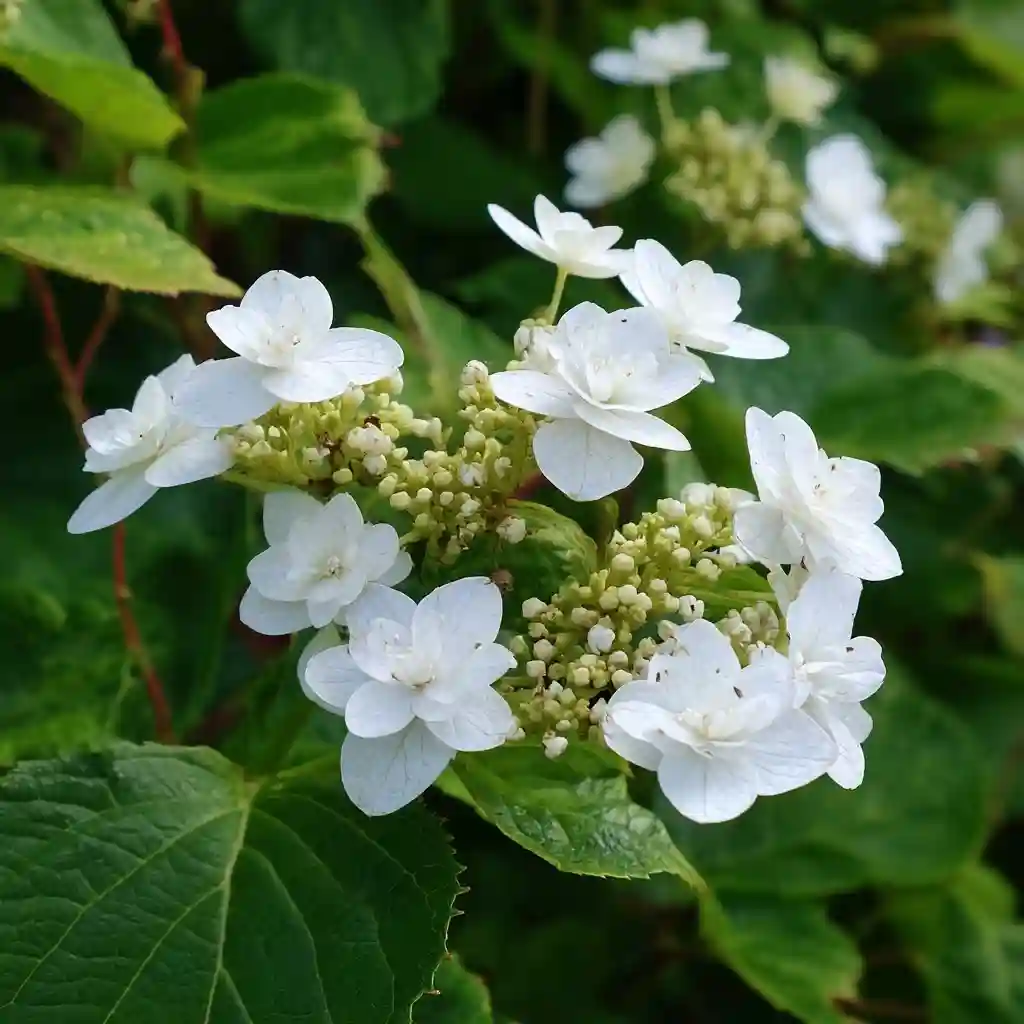
For gardeners seeking delicate charm, ‘Lanarth White’ stands out among white hydrangea varieties for its lacecap blooms and refined form. Unlike mophead types, this cultivar offers a flat-topped floral display, with tiny, fertile center flowers in subtle pink or blue tones, surrounded by larger, pristine white sterile florets.
These two-toned clusters create a graceful, lacy effect that pairs beautifully with informal or cottage-style garden themes. Its mid-green foliage is deeply veined and semi-glossy, adding textural contrast throughout the growing season.
‘Lanarth White’ is also salt-tolerant, making it a smart choice for coastal gardens. With its compact shape, it’s perfectly suited for foundation planting, containers, or border edges where its elegant blooms can shine.
Why Grow ‘Lanarth White’?
- Unique lacecap bloom with white outer florets
- Soft, romantic floral display from early summer to fall
- RHS Award of Garden Merit winner
- Tolerates coastal conditions and salt spray
Growing Tips
- Hardiness: USDA zones 6–9
- Height & Spread: 4–5 ft
- Light: Partial shade preferred; tolerates full sun
- Soil: Fertile, moist, well-drained; mildly acidic to neutral
- Best Use: Coastal gardens, containers, cottage borders
4. Oakleaf Hydrangea (Hydrangea quercifolia)
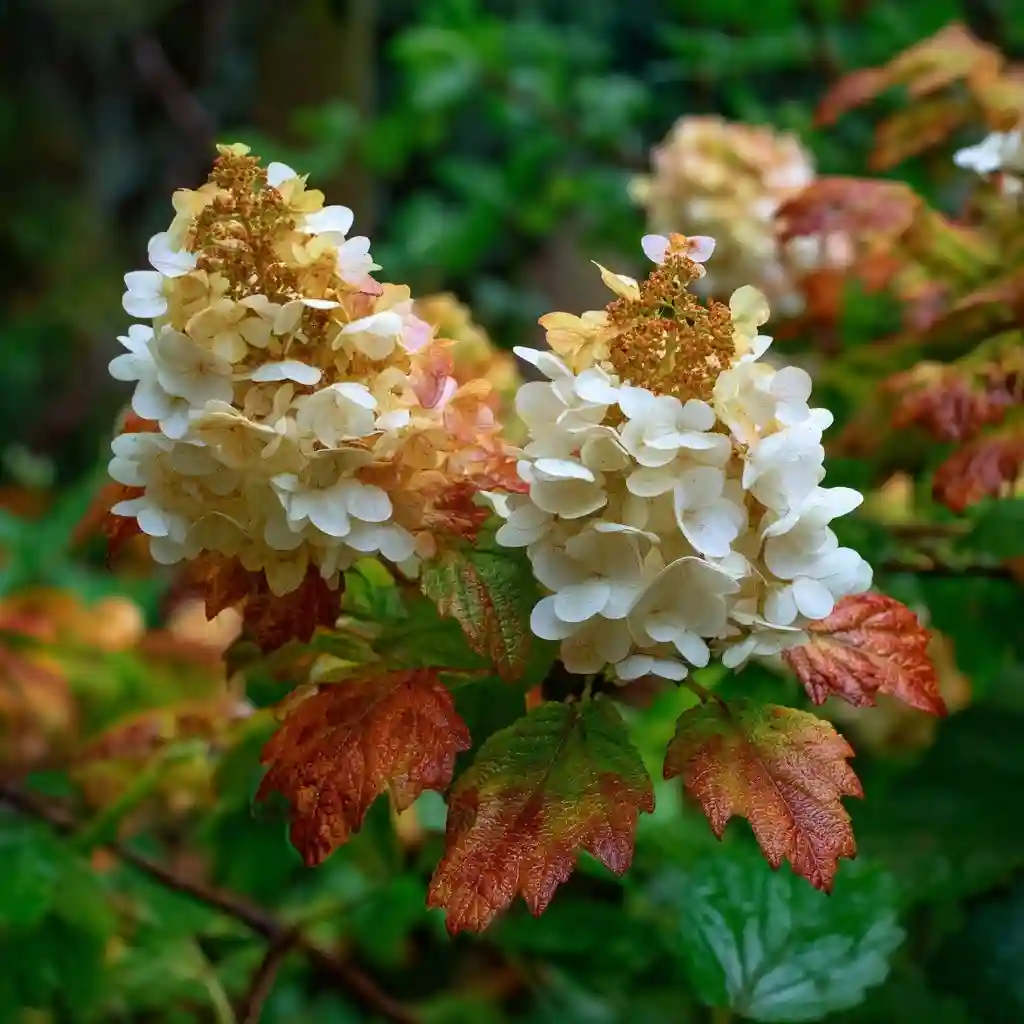
Among white hydrangea varieties, Oakleaf hydrangea is prized not just for its creamy white blossoms, but also for its boldly textured foliage that brings year-round interest. The name “oakleaf” refers to the shrub’s lobed leaves, which resemble those of an oak tree and put on a fiery fall show in reds, oranges, and purples.
Its large, conical flower clusters bloom in late spring and continue well into winter in mild climates. The blossoms begin a soft white, slowly aging to pink and eventually fading into a parchment-like tone that adds winter texture.
Native to the southeastern United States, Oakleaf hydrangea thrives in woodland gardens, naturalized settings, and shaded borders, where its loose, informal shape can spread freely.
Why Choose Oakleaf Hydrangea?
- Striking foliage that transitions beautifully through the seasons
- Long-lasting, conical white blooms with pink aging tones
- Native species well-adapted to U.S. climates
- Great for informal, shady gardens and naturalized landscapes
Growing Tips
- Hardiness: USDA zones 5–9
- Height & Spread: 6–8 ft
- Light: Partial shade preferred; tolerates full sun
- Soil: Moist but well-draining; tolerates mild dryness
- Best Use: Woodland borders, shady hedges, native plant gardens
5. Climbing Hydrangea (Hydrangea anomala subsp. petiolaris)
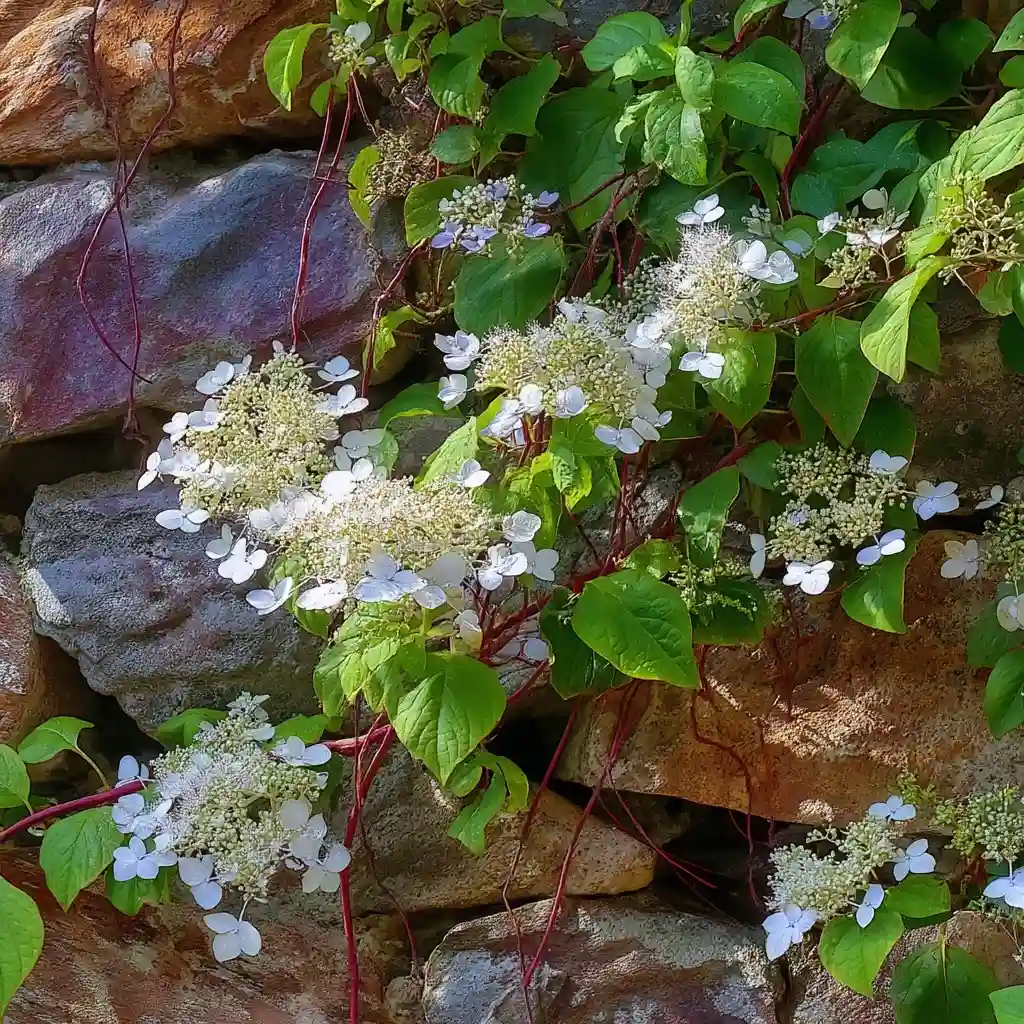
Unlike most white hydrangea varieties, the Climbing hydrangea is a vigorous, woody vine that brings vertical beauty to trellises, fences, or even shaded walls. This deciduous climber uses aerial rootlets to cling to structures, creating a living wall of lush foliage and frothy, fragrant white blooms.
Its lacy flower clusters emerge in late spring and resemble clouds made of tiny fertile florets surrounded by larger, showy white petals. These blooms remain attractive through summer and pair beautifully with the dark green, heart-shaped leaves.
Another standout feature is its cinnamon-colored, exfoliating bark, which provides winter interest even after the foliage has dropped. Despite its slow start, once established, Climbing hydrangea becomes a robust, long-lived garden feature.
Why Grow Climbing Hydrangea?
- Elegant white lacecap blooms with a subtle fragrance
- Perfect for shady vertical spaces
- Peeling bark adds winter beauty
- Low-maintenance once established
Growing Tips
- Hardiness: USDA zones 4–9
- Height & Spread: 30–40 ft tall, 5–6 ft wide
- Light: Full shade to part sun
- Soil: Rich, moist, well-draining; mildly acidic to neutral
- Best Use: Walls, arbors, pergolas, woodland garden structures
6. ‘Grandiflora’ Panicle Hydrangea (Hydrangea paniculata ‘Grandiflora’)
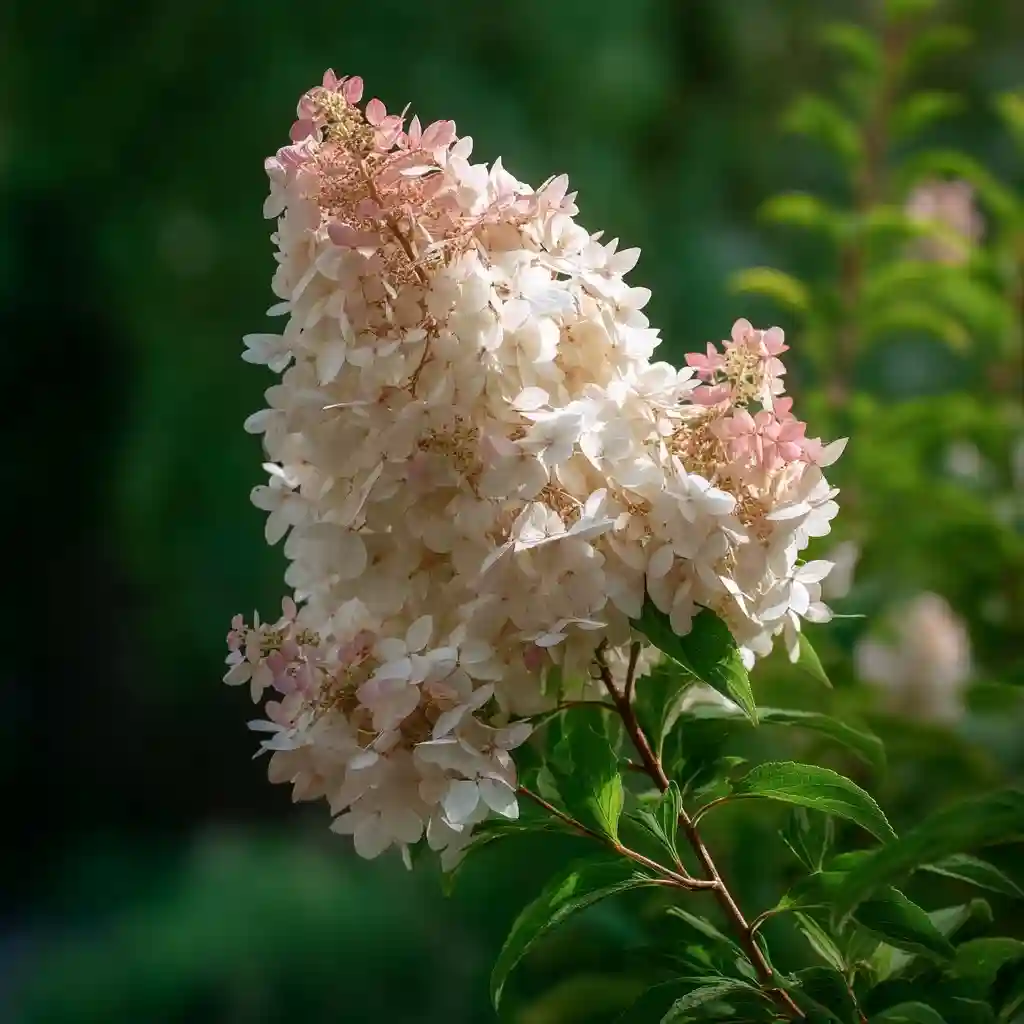
Known affectionately as PeeGee hydrangea, ‘Grandiflora’ is one of the largest and showiest white hydrangea varieties available. It grows more like a small tree than a shrub, with strong, woody stems that support oversized conical flower clusters stretching up to 18 inches long.
These blooms emerge mid-summer as soft white and gradually take on hints of pink as they age, offering months of evolving color. Its deep green, serrated foliage turns golden and burgundy in fall, adding another layer of interest.
This cultivar is particularly heat- and pollution-tolerant, making it ideal for urban gardens and sunny locations. Whether grown as a specimen tree or large hedge, ‘Grandiflora’ delivers high impact with minimal fuss.
Why Choose ‘Grandiflora’?
- Gigantic, conical white flower clusters up to 18 inches
- Can be pruned into tree form
- Heat, humidity, and urban pollution tolerant
- One of the most dramatic summer-flowering shrubs
Growing Tips
- Hardiness: USDA zones 3–8
- Height & Spread: 10–25 ft tall, 8–15 ft wide
- Light: Full sun to part shade
- Soil: Deep, fertile, moist but well-draining; mildly acidic to mildly alkaline
- Best Use: Large borders, specimen tree, urban gardens
7. ‘Incrediball’ Smooth Hydrangea (Hydrangea arborescens ‘Incrediball’)
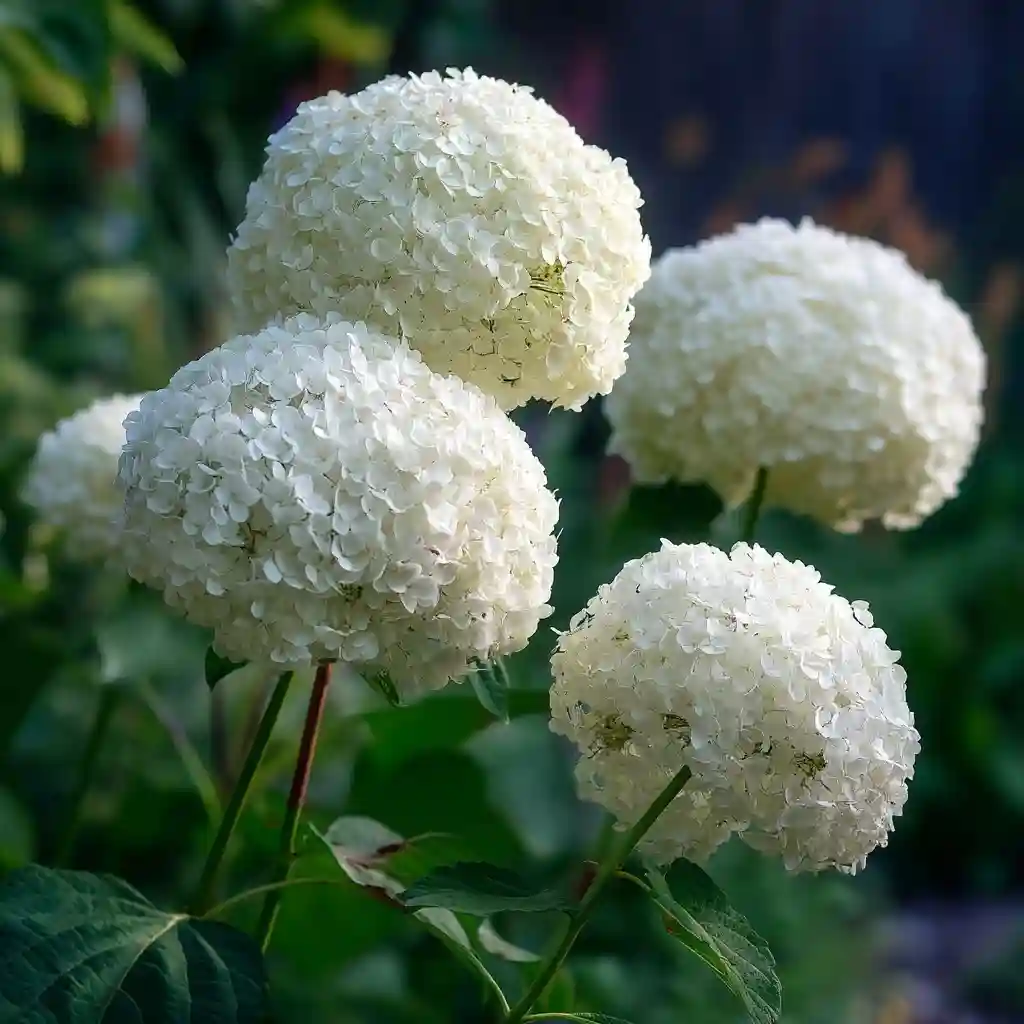
If you’re searching for one of the most robust and dramatic white hydrangea varieties, look no further than ‘Incrediball’. This improved version of the classic ‘Annabelle’ offers even larger, more spherical flower heads—up to 12 inches across—that appear like giant snowballs resting on tall, sturdy stems.
These blooms start as soft green in early summer, transition to pure white at peak, then return to greenish tones as they age—providing months of color and texture. Thanks to its reinforced stems, ‘Incrediball’ holds its massive flower heads upright, even after heavy rain.
Compact in height but bold in bloom, this cultivar shines in borders, foundation plantings, or anywhere you want lush, low-maintenance beauty.
Why Grow ‘Incrediball’?
- Extra-large, snowball-like blooms
- Upright stems that resist flopping
- Cold-hardy and adaptable
- Perfect for cut flowers or four-season interest
Growing Tips
- Hardiness: USDA zones 3–8
- Height & Spread: 4–5 ft
- Light: Full sun to part shade
- Soil: Moist, well-drained, fertile; mildly acidic to neutral
- Best Use: Borders, low hedges, foundation plantings
8. ‘Tardiva’ Panicle Hydrangea (Hydrangea paniculata ‘Tardiva’)
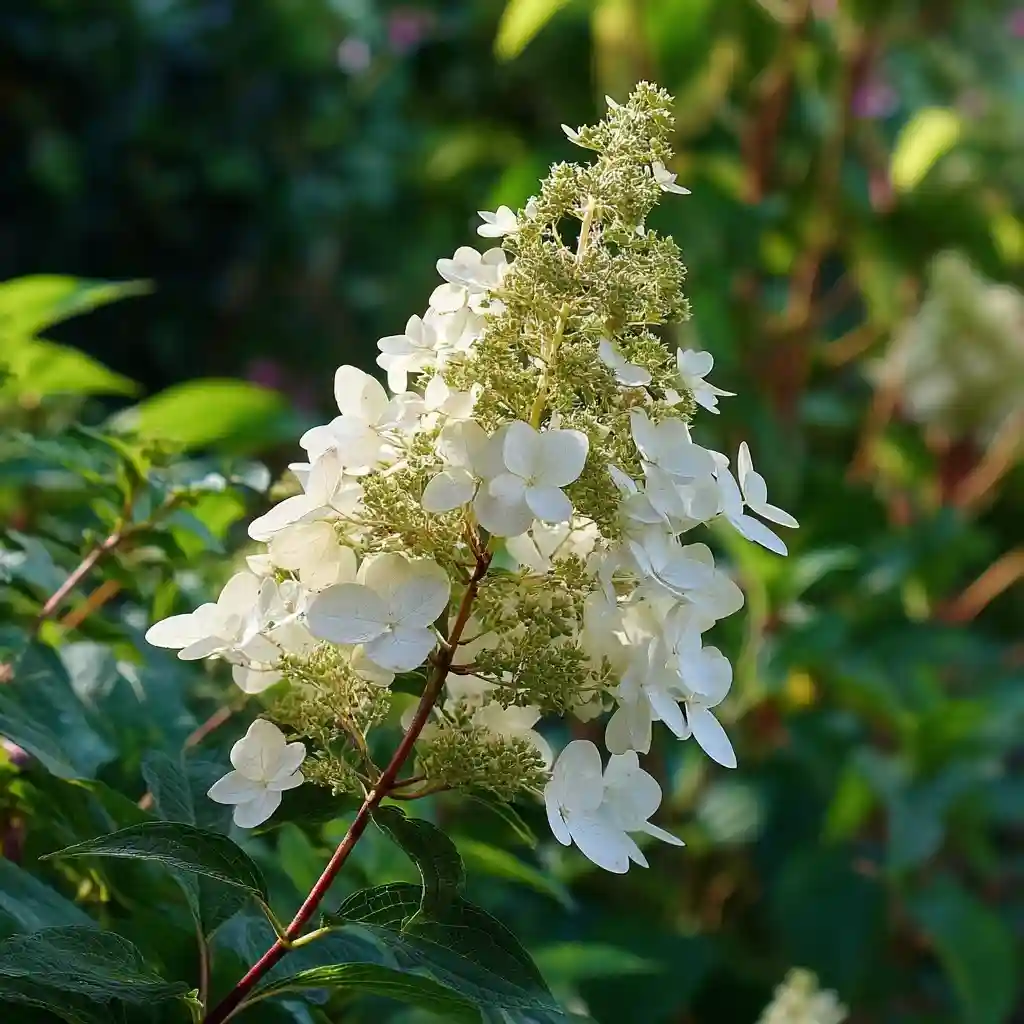
As its name suggests, ‘Tardiva’ is one of the latest-blooming white hydrangea varieties, making it a prized addition for extending garden interest into the fall. This panicle hydrangea features upright, cone-shaped flower clusters that bloom later than most—typically from late summer into mid-autumn.
The inflorescences contain both tiny fertile flowers and larger sterile blooms with rounded white petals, giving them a softly textured appearance. These tall, airy flower spikes rise above deep green, semi-glossy foliage that shifts to warm yellow and burgundy tones in autumn.
‘Tardiva’ is a reliable option for gardeners who want to stretch their hydrangea season and enjoy elegant blooms long after summer’s peak. It’s also salt-tolerant, making it suitable for coastal landscapes.
Why Choose ‘Tardiva’?
- One of the latest blooming white hydrangeas
- Elegant, upright panicles extend seasonal color
- Cold-hardy and drought-tolerant once established
- Ideal for hedges, mixed borders, or coastal gardens
Growing Tips
- Hardiness: USDA zones 3–8
- Height & Spread: 8–12 ft tall, 7–10 ft wide
- Light: Full sun to part shade
- Soil: Rich, moist but well-draining; mildly acidic to mildly alkaline
- Best Use: Seasonal hedges, informal borders, large backdrop planting
9. ‘Beni-Gaku’ Mountain Hydrangea (Hydrangea serrata ‘Beni-Gaku’)
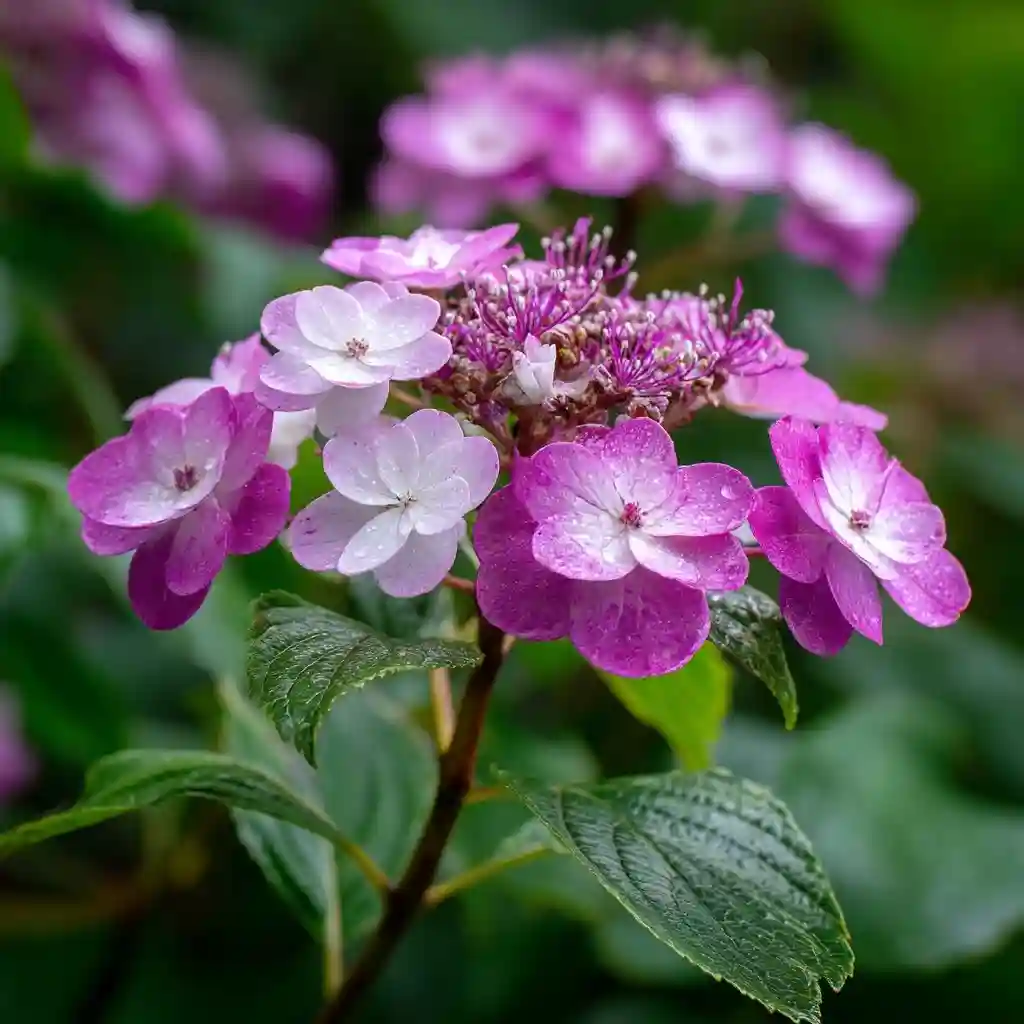
‘Beni-Gaku’ offers a unique twist among white hydrangea varieties—it blends soft white petals with splashes of pink and violet for a truly eye-catching display. This lacecap mountain hydrangea blooms in midsummer with clusters that showcase a delicate interplay between tiny, colorful fertile flowers and large, white sterile florets.
As the flowers mature, the white petals blush gently at the edges with shades of rose, creating a soft, watercolor-like effect. Its long, arching stems allow these blooms to float above finely serrated green leaves, which remain lush throughout the season.
This compact shrub is ideal for small gardens or patio containers, and it thrives in slightly shaded spots where its pastel hues can shine without fading.
Why Choose ‘Beni-Gaku’?
- Two-tone white and pink lacecap blooms
- Compact habit fits tight spaces
- Long blooming period through summer
- Adds artistic elegance to shaded garden areas
Growing Tips
- Hardiness: USDA zones 5–9
- Height & Spread: 3–4 ft
- Light: Partial shade preferred
- Soil: Moist, fertile, well-draining; mildly acidic to mildly alkaline
- Best Use: Containers, shaded borders, foundation plantings
10. ‘Gatsby Moon’ Oakleaf Hydrangea (Hydrangea quercifolia ‘Gatsby Moon’)
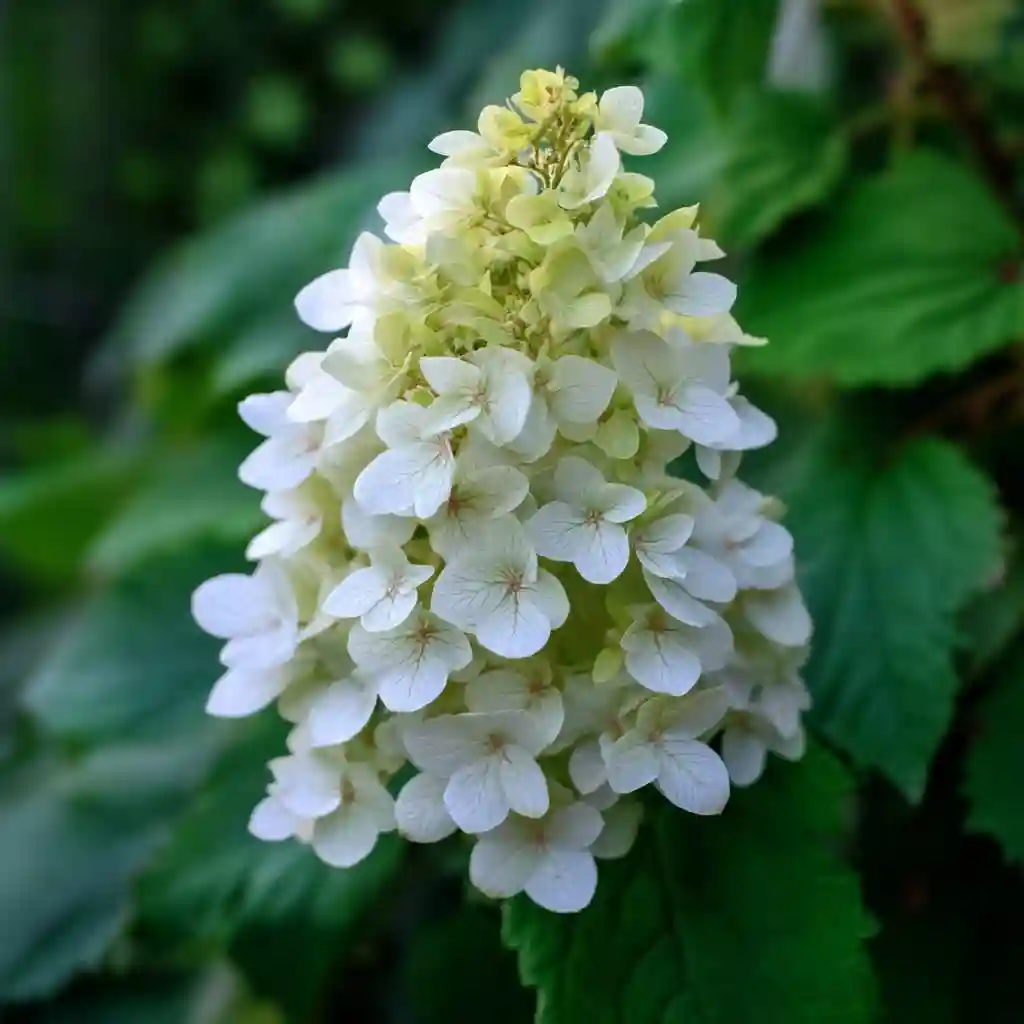
‘Gatsby Moon’ is a showstopper among white hydrangea varieties, known for its incredibly dense flower clusters and dramatic oakleaf foliage. Blooming from early summer through early fall, this cultivar produces cone-shaped inflorescences packed so tightly with creamy white petals that they resemble scoops of vanilla ice cream.
The blossoms may show hints of pale green when young, aging gracefully over the season. Just as striking is the foliage—deeply lobed leaves that provide bold texture and turn rich shades of red, purple, and burgundy in the fall.
With a moderate size and upright form, ‘Gatsby Moon’ is well-suited for foundation plantings, informal hedges, and woodland borders where its layered blooms and seasonal leaf color can truly shine.
Why Grow ‘Gatsby Moon’?
- Densely packed white blooms with a unique conical shape
- Gorgeous autumn foliage in deep jewel tones
- Perfect for naturalistic or cottage-style gardens
- Great as a dry cut flower for arrangements
Growing Tips
- Hardiness: USDA zones 5–9
- Height & Spread: 6–10 ft
- Light: Partial shade preferred; tolerates full sun
- Soil: Rich, moist, well-draining; mildly acidic to neutral
- Best Use: Hedging, shrub borders, fall-focused landscapes
11. ‘Snow Queen’ Oakleaf Hydrangea (Hydrangea quercifolia ‘Snow Queen’)
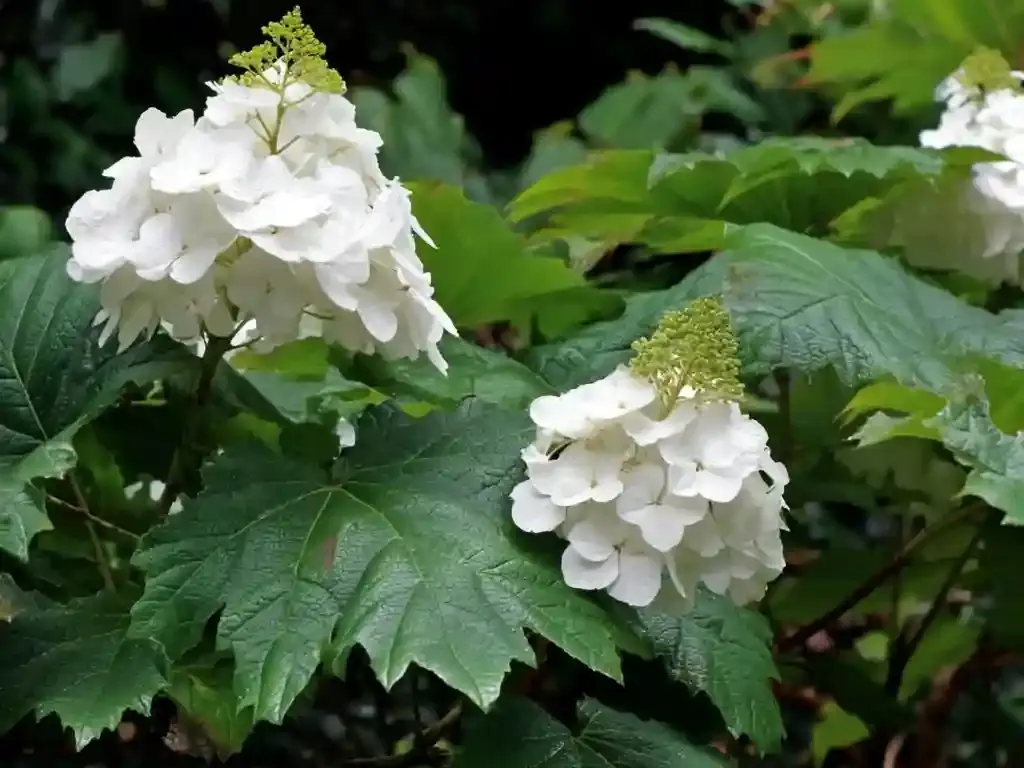
Refined and timeless, ‘Snow Queen’ is one of the most beloved white hydrangea varieties for gardeners who value elegance with a touch of wild charm. This cultivar stands out with long, upright panicles of crisp white flowers that bloom in late spring and carry on through summer.
The blooms start with hints of fresh green, gradually turning fully white before taking on soft pink tones as the season progresses. The deeply lobed, semi-glossy foliage is another highlight—lush green in summer, transforming to brilliant shades of red and plum in the fall.
A recipient of both the RHS Award of Garden Merit and the Pennsylvania Horticultural Society’s Gold Medal Award, ‘Snow Queen’ thrives in mixed borders, large shrub beds, or as a striking seasonal backdrop.
Why Choose ‘Snow Queen’?
- Elegant, upright white blooms with seasonal color shift
- Award-winning garden performance
- Beautiful foliage transition in autumn
- Versatile and reliable for a variety of landscapes
Growing Tips
- Hardiness: USDA zones 5–9
- Height & Spread: 4–6 ft tall, 6–8 ft wide
- Light: Full sun to part shade
- Soil: Moist, well-drained, humus-rich; mildly acidic to mildly alkaline
- Best Use: Shrub borders, foundation beds, woodland edges
12. ‘Snowflake’ Oakleaf Hydrangea (Hydrangea quercifolia ‘Snowflake’)

‘Snowflake’ is a truly distinctive option among white hydrangea varieties, thanks to its showy, double-petaled blooms that create a tiered, pagoda-like effect. Each inflorescence features multiple layers of petals, forming long, cascading panicles that reach up to 12 inches in length.
The blooms open in late spring as creamy white and gradually take on delicate shades of blush pink and soft green as they mature, offering an evolving display of color and texture. These fluffy, flower-laden spikes are set against a backdrop of rich green, deeply lobed leaves that erupt into fiery reds and purples in autumn.
Highly decorative and award-winning, ‘Snowflake’ is equally suited as a focal point or backdrop in shady borders, woodland gardens, or relaxed landscape designs.
Why Grow ‘Snowflake’?
- Double blooms with layered, full-bodied texture
- Extended bloom season from spring through midsummer
- Bold fall color and year-round interest
- Winner of the RHS Award of Garden Merit
Growing Tips
- Hardiness: USDA zones 5–9
- Height & Spread: 6–10 ft
- Light: Partial shade preferred; tolerates morning sun
- Soil: Fertile, moist but well-drained; mildly acidic to neutral
- Best Use: Accent shrub, informal hedges, shaded beds
Conclusion
White hydrangea varieties bring a touch of elegance and timeless charm to gardens of all sizes and styles. From the classic mophead blooms of ‘Annabelle’ to the dramatic double flowers of ‘Snowflake’, there’s a white hydrangea to suit every landscape—whether you need a compact border plant, a stately hedge, or a climbing beauty for vertical interest.
With thoughtful placement and proper care, these graceful shrubs can bloom from late spring into fall, filling your garden with soft, glowing blossoms and, in many cases, stunning seasonal foliage. Use this guide to find the perfect white hydrangea variety for your needs, and enjoy years of color, texture, and structure in your outdoor space.
FAQ
What is the most low-maintenance white hydrangea?
‘Annabelle’ and ‘Incrediball’ are top choices for low-maintenance care, offering strong stems and reliable blooms even in partial shade.
Can white hydrangeas change color like other types?
Most white varieties remain white regardless of soil pH. Some, like ‘Beni-Gaku’, may develop pinkish tones as they age, but they do not shift dramatically like blue or pink hydrangeas.
Do white hydrangeas need full sun?
Many white hydrangea varieties perform best in part shade. Panicle types like ‘Grandiflora’ and ‘Tardiva’ tolerate full sun better than oakleaf or smooth types.
🌿 Love gardening inspiration? Follow me on Pinterest for bold plant ideas, tips, and seasonal color!
More Posts

